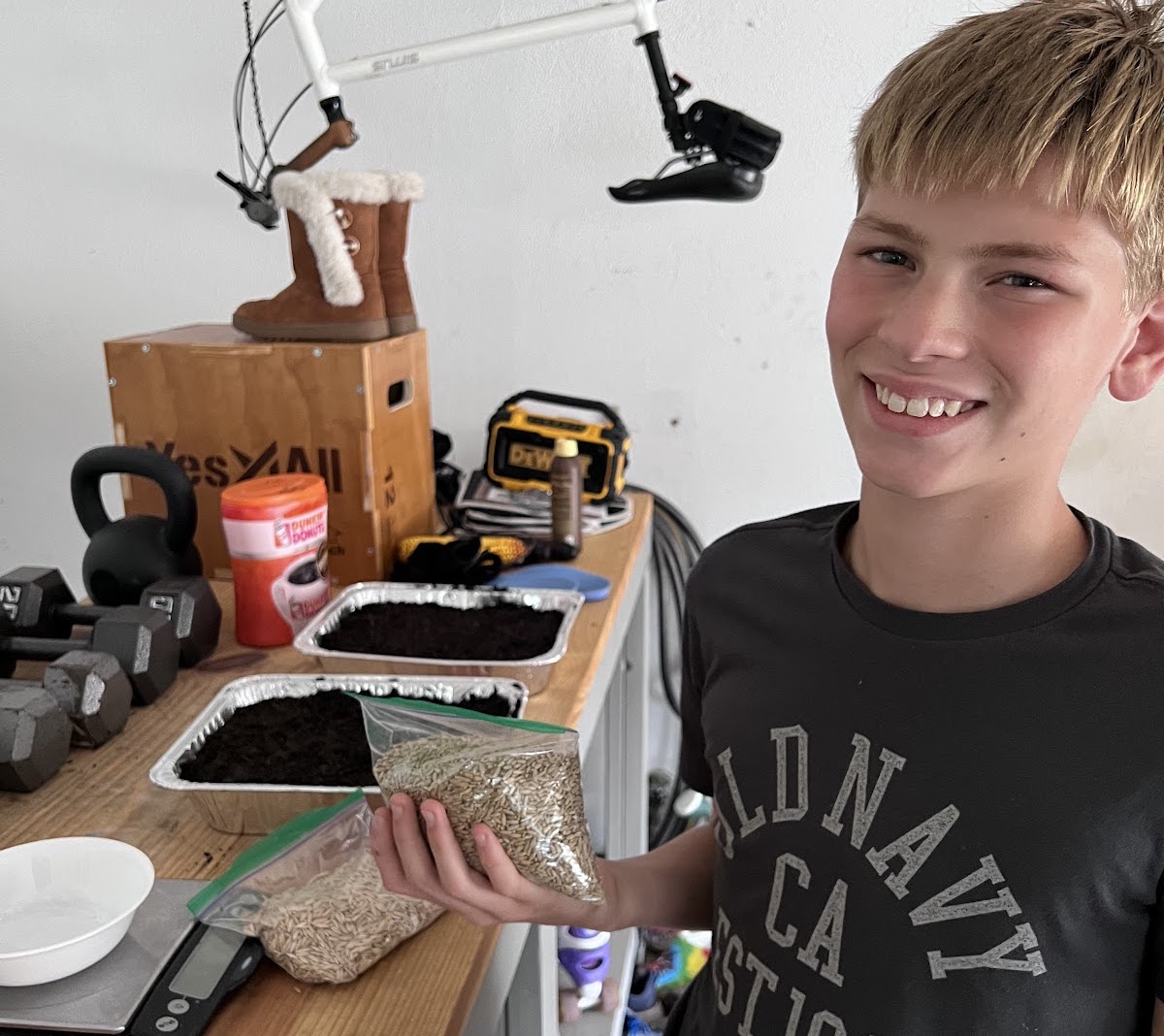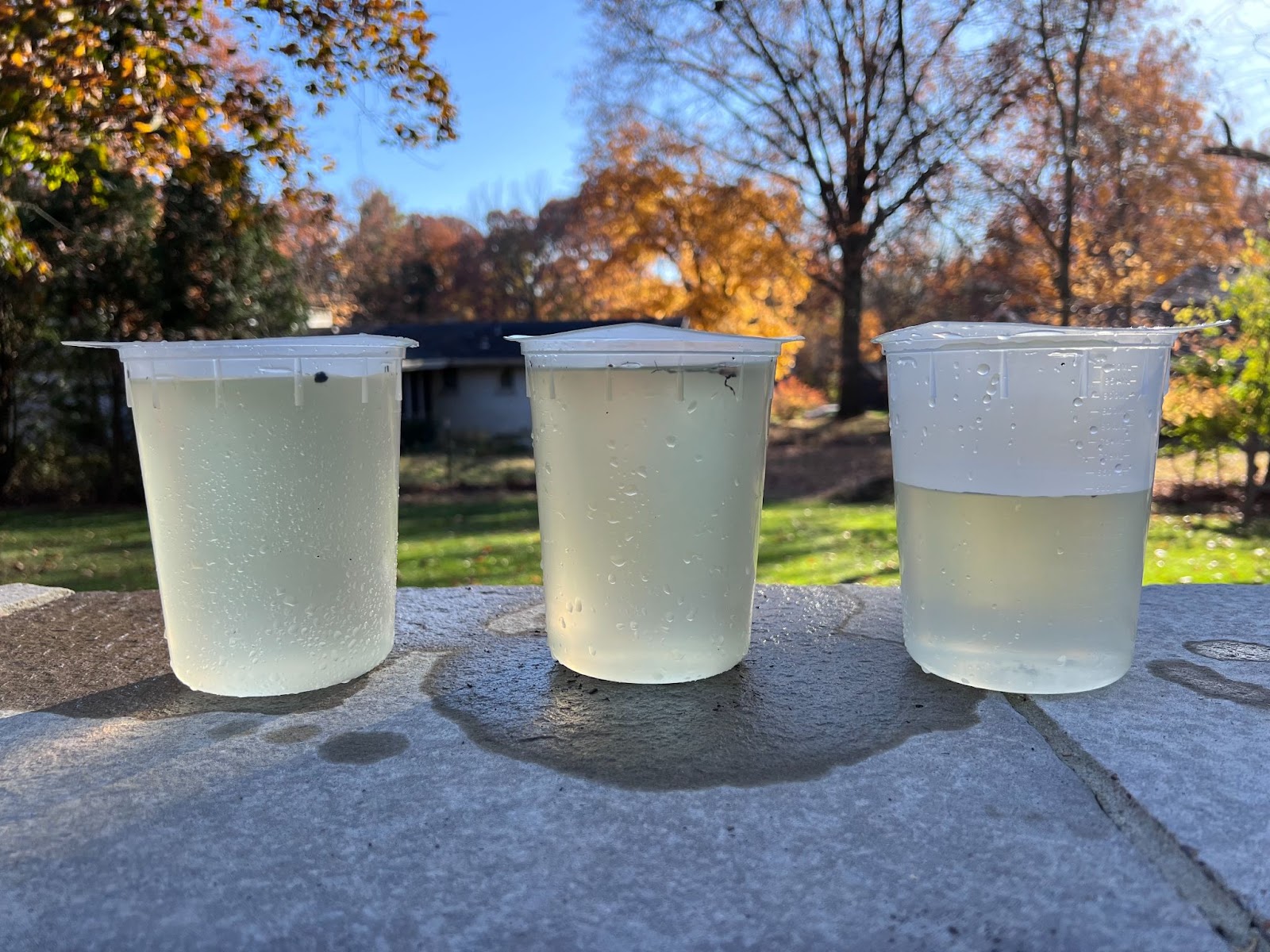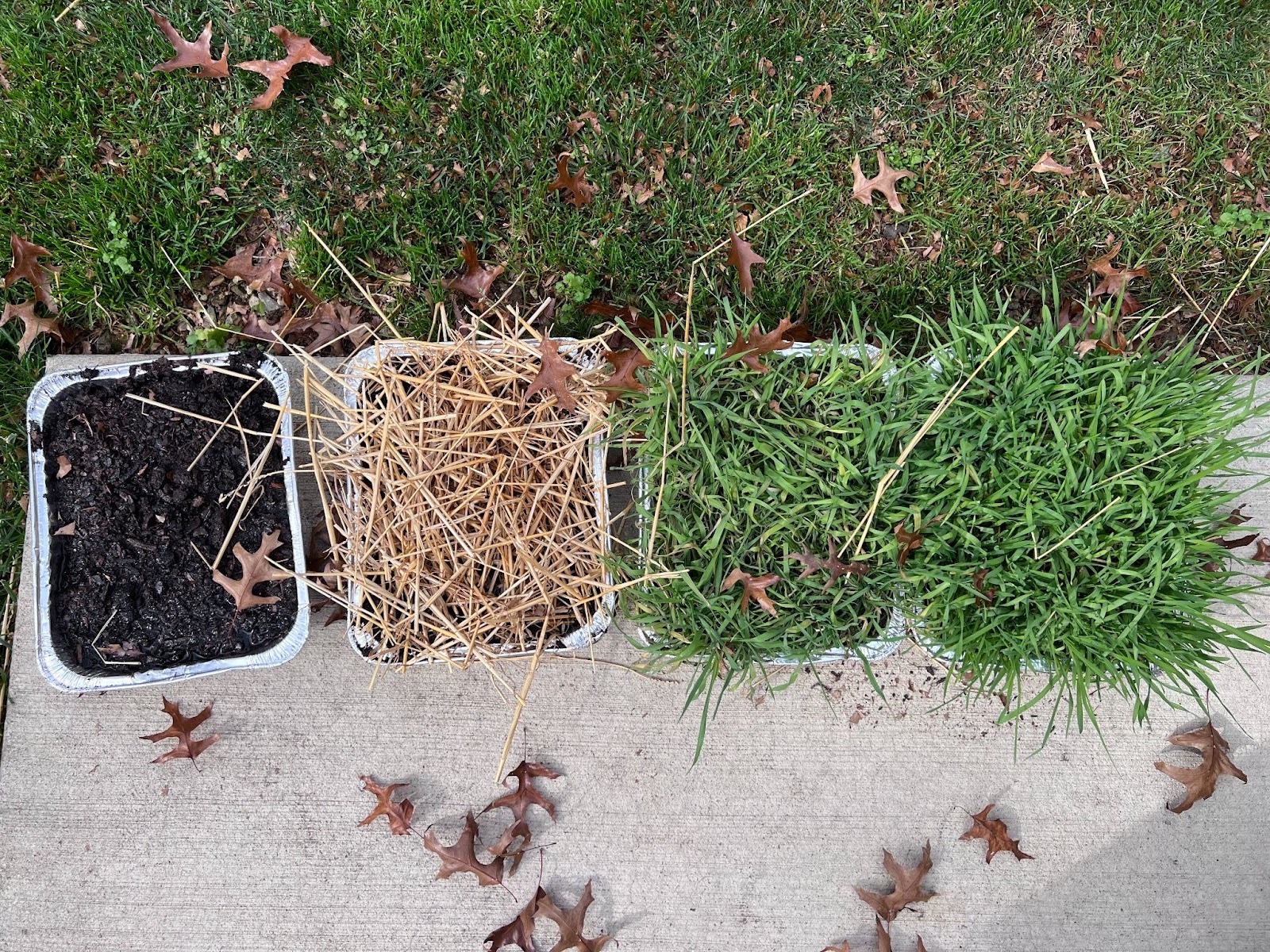Testing Soil Erosion
What combination of conservation practices protects soil the best?
Supervising teacher
Darryl Woods
Student
Jack Shindollar
School
St Mary of the Immaculate Conception
Supporting files
shindollar-science-fair-7th.pdf


What combination of conservation practices best protects soil? Four “test plots” were created in aluminum trays to figure it out. The first “test plot” was plain soil: a conventionally tilled field of bare dirt. The second “test plot” was plain soil with straw on top: a no-till field with no cover crops. In the third “test plot” cereal rye and oats were planted to recreate a conventional field with a cover crop. The last “test plot” had cereal rye, oats, and straw, representing a no-till field with a cover crop. To test the plots a rain simulator was set up that poured a gallon of water from a watering can and held 12 inches above the tray, that was steadily poured back and forth over the plots so it drained into a large tray. After all the water was poured, the runoff and was collected by pouring it into graduated cylinders to measure the amount of water and sediment that had come through. The hypothesis was that the fourth tray—the no-till field with a cover crop—would be the one that had the least amount of runoff. The hypothesis was correct, but even though I thought that the combination of no-till and cover crops would be the best for erosion prevention I was still surprised by how clear the water was. This experiment would be excellent proof to show to farmers who might not be using conservation methods yet.
